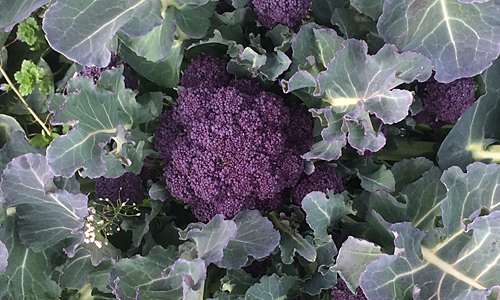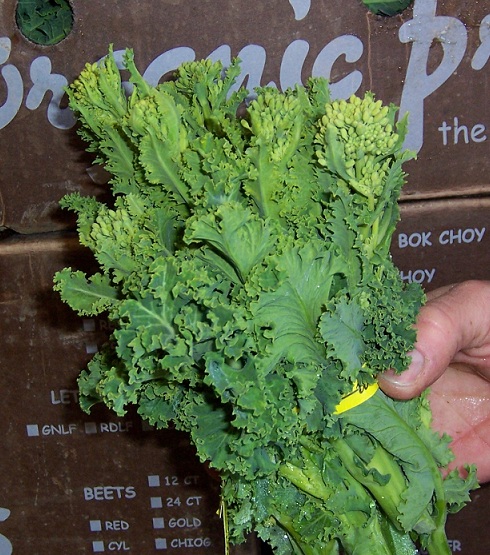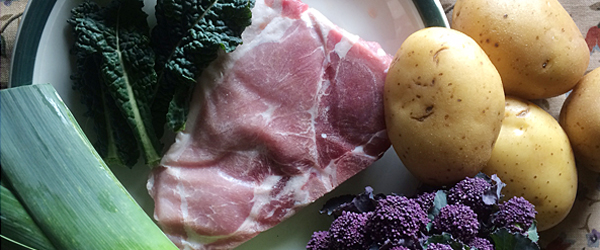Purple sprouting broccoli is a gorgeous and nutritious treat that graces our tables in the spring. As a member of the brassica family, it has detoxifying properties and is a great way for your body to cleanse. The deep purple color indicates a unique antioxidant profile and will also add some color variety to your plate. Additionally, it is an excellent source of vitamin C, which supports your immune system as the season shifts.

Grilled Purple Sprouting Broccoli with Tahini Dressing
1 bunch of Nash’s purple sprouting broccoli
2 Tbsp. olive oil, plus extra to serve
½ clove garlic, crushed with a little salt
2 Tbsp. light tahini, stirred
½ lemon, zest finely grated, juiced
½ orange, juiced
½ tsp. clear honey
Sea salt and freshly ground black pepper
1 Tbsp. olive oil
For the dressing, put the garlic in a small bowl with the tahini, lemon zest and juice, orange juice, honey and a grind of black pepper. Stir well. Thin down by whisking in water, a tablespoon at a time, till the dressing has a creamy consistency. Gently stir in the oil and season to taste.
Trim the broccoli, removing any tough ends; slice any thick stems lengthwise. Steam over boiling water for three minutes, until just starting to soften but not fully tender. Or cook in boiling water for four minutes, until not quite tender, then drain well. The broccoli will be cooked further in the grill pan, so you want it under-done at this stage.
Put two tablespoons of olive oil and some salt and pepper into a bowl. Add the broccoli, toss it in the seasoning and oil. Heat a ridged cast-iron grill pan over a high heat. When hot, add the broccoli and sear for five to seven minutes, turning from time to time, until tender and patched with dark brown char marks. Transfer to a warm dish, trickle over some of the dressing, add a little more salt and pepper, and an extra dash of olive oil, and serve.
We thank theguardian.com for this recipe.
Have you tried this recipe? Tell us how it turned out!


 Above are the ingredients for Nash and Patty’s dinner yesterday evening. It took only 1/2 hour to prepare, was almost entirely local, and tasted delicious. First we preheated the oven to 350°F. In went the small potatoes to start baking. The pork chops were seasoned with garlic salt and pepper, and browned in a skillet in Nash’s camelina oil for 3 minutes per side. Then they were transferred to an oven-proof pan and put in the oven for exactly 10 minutes. Meanwhile, we splashed a little Olympic Cellars Working Girl white wine in the skillet, and put in some chopped leeks to soften and flavor the wine. Then we added the kale and covered it to simmer. The purple sprouting broccoli went into a steamer.
Above are the ingredients for Nash and Patty’s dinner yesterday evening. It took only 1/2 hour to prepare, was almost entirely local, and tasted delicious. First we preheated the oven to 350°F. In went the small potatoes to start baking. The pork chops were seasoned with garlic salt and pepper, and browned in a skillet in Nash’s camelina oil for 3 minutes per side. Then they were transferred to an oven-proof pan and put in the oven for exactly 10 minutes. Meanwhile, we splashed a little Olympic Cellars Working Girl white wine in the skillet, and put in some chopped leeks to soften and flavor the wine. Then we added the kale and covered it to simmer. The purple sprouting broccoli went into a steamer.